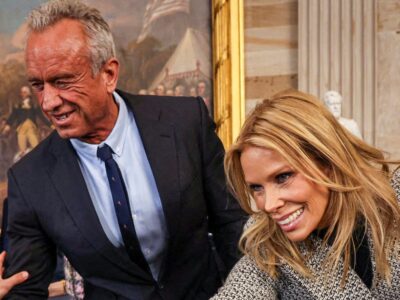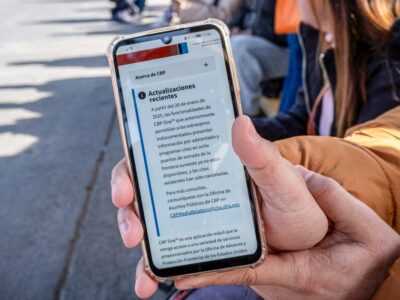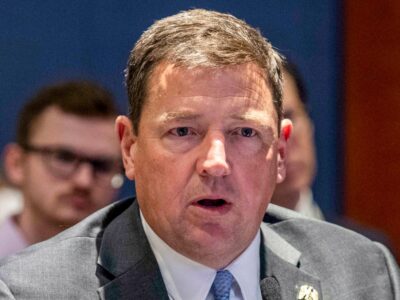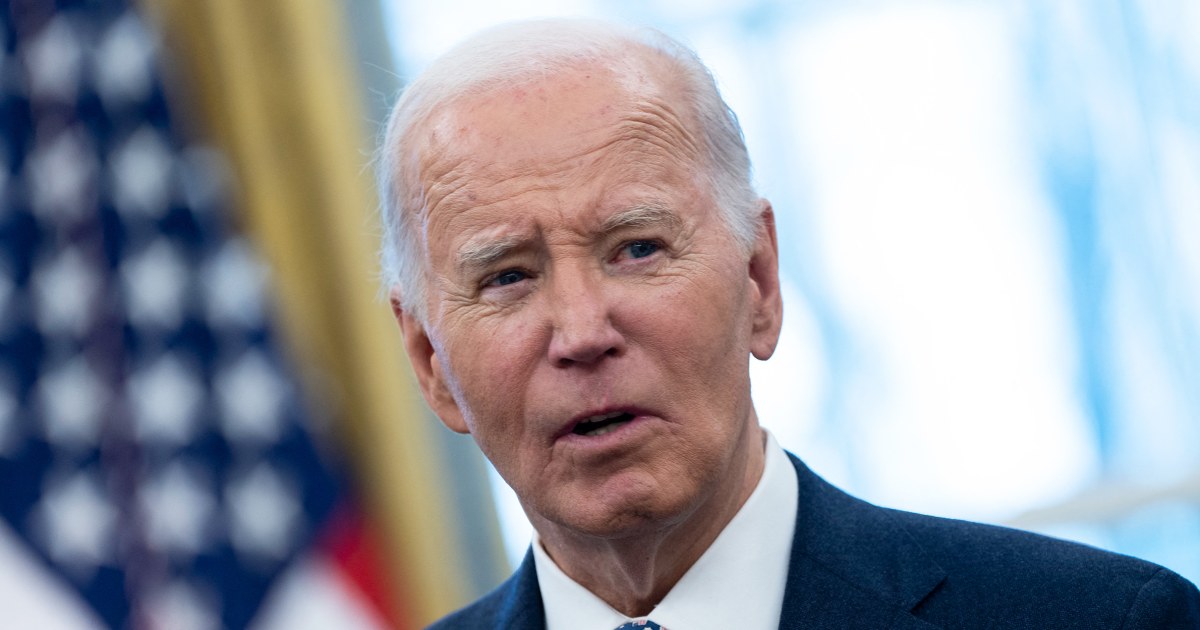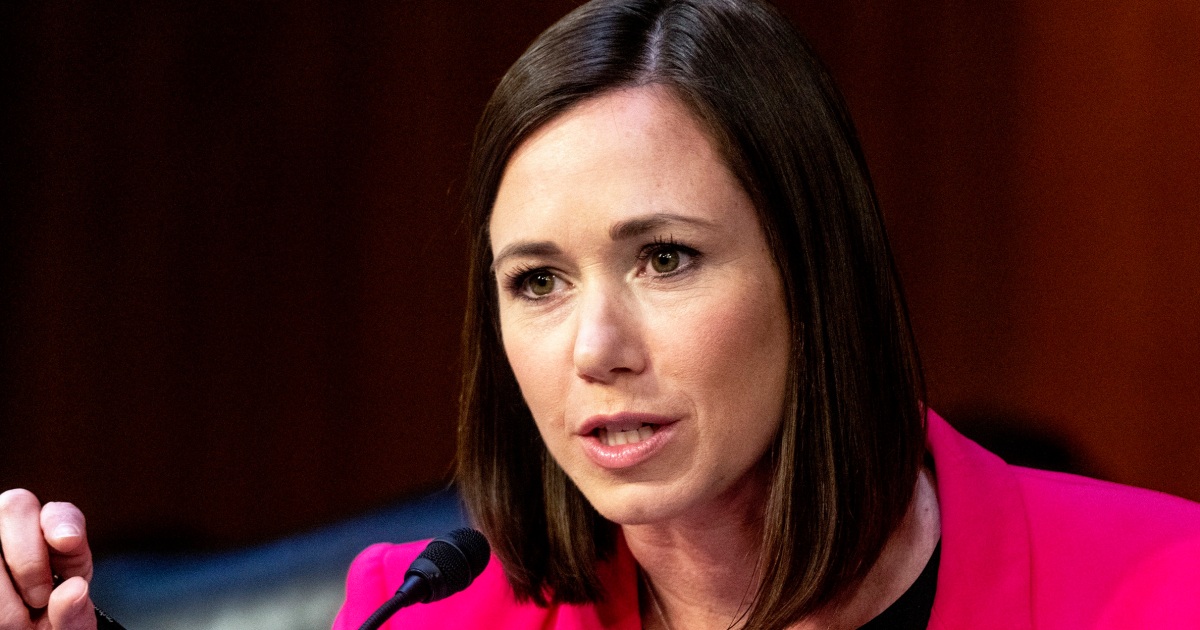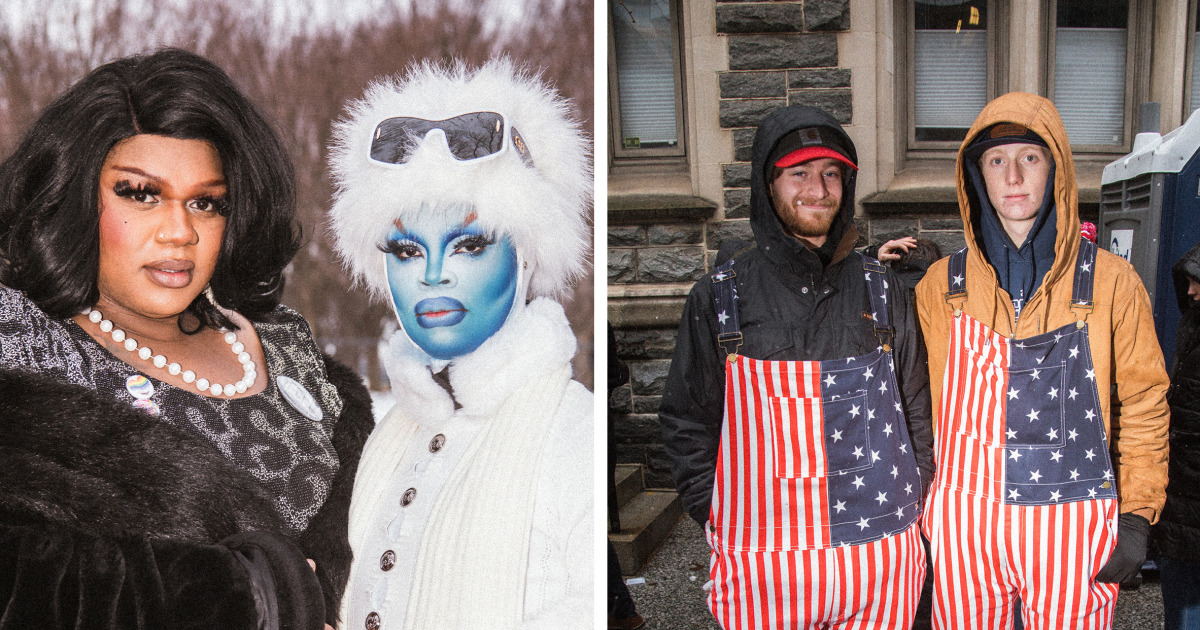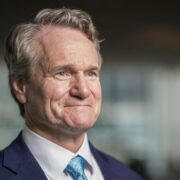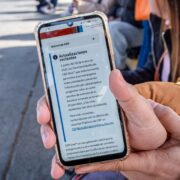
The text came from a fellow journalist. I was driving and glanced at it at a red light. It was a forward of an X post by @realDonadTrump. “You see this!?” my friend had written.
— Donald J. Trump (@realDonaldTrump) October 15, 2024
As I glanced at it, I saw the back of a police car and what looked like two legs covered in white. There were black shoes, the toes pointing skyward.
Memory jarred me seconds later. That was a 17-year-old photo of murdered journalist Chauncey Bailey lying dead in the street. From Trump? What the hell? I pulled over and discovered that what I had thought was a photo was the opening image of a video. I hit play.
“This is a journalist named Chauncey Bailey,” a disembodied voice said. “We can’t show you his face. It was blown away by this man’s .12-gauge shotgun,” the narration continued as a photo of a dark-eyed young man came on the screen with the caption “Repeat criminal D. Broussard.” It was followed by a re-creation of Bailey’s 2007 killing, an actor playing a masked gunman firing a shotgun twice.
“Unfortunately, the murderer never should have been there. He should have been in jail,” the narrator continued. “Broussard was previously convicted of brutal assault. San Francisco’s liberal DA Kamala Harris”—the narrator, like Trump, mispronounces Harris’ first name as a photo of her is shown—“put him back on the street instead of in jail. Now, Harris has blood on her hands.”
Then, an all too familiar voice: “I am Donald J. Trump and I approved this message.” A photo of Broussard also appears in a second Trump ad over which a narrator says, “As San Francisco DA liberal Kamala Harris let killers go free.”
The ads were designed by a Trump-controlled Super PAC, Maga Inc. that’s painting Harris as a pro-criminal leftist radical who’s soft on crime. It has spent at least $75 million in swing states, including Georgia and Pennsylvania, according to published reports and Federal Election Commission records. Neither campaign responded to questions about the ads.
As first reported by the non-profit news site The Oaklandside, the ad that shows Bailey’s corpse is as rank with Trump’s utter hypocrisy as it is factually inaccurate in claiming Harris is somehow responsible for his death.
From his mocking of disabled Wall Street Journal reporter Serge Kovaleski in 2015 to his repeated use of the Stalinesque “enemies of the people” in his attacks on the media, to urging crowds at his rallies to undertake physical aggression against reporters, Trump’s seemingly endless contempt for a free press is ubiquitous. Campaigning this year, he’s said if elected he would jail reporters who refused to reveal sources, in his words making them go “bye-bye.” He’s repeatedly called for overturning the landmark unanimous Supreme Court decision on libel in Times vs. Sullivan and probably would also support overturning the court’s ruling on prior restraint in the Pentagon Papers case.
Trump’s contempt for journalists long predates his time in national politics. As a newspaper reporter in Atlantic City, New Jersey, in the 1990s, I frequently encountered Trump. He owned three casinos at the time and often attacked my reporting on his long casino-development war with rival Steve Wynn, calling me “a fucking twerp,” “a moron,” “an asshole,” and other names. But Atlantic City was a small stage, and most of those remarks were in phone calls and interviews. And all that was years before Bailey’s murder, which shocked and scared journalists in California and nationally.
Within days I was assigned to cover the killing full time, working with others on what became known as the “Chancey Bailey Project.” It was an assignment that lasted nearly five years involving daily stories, as well as deeply reported investigative stories showing the depths of the Bey’s cult, and police indifference and incompetence. The work culminated in a book I wrote in 2012 with the overarching message that you can’t kill a story by killing a journalist. And there also was an element of self-preservation. As the great investigative reporter Robert W. Greene of Newsday noted, when he led a similar effort following the 1976 car-bombing death of reporter Don Bolles, such work is like “buying life insurance” for journalists. The response must be to create more journalism about the matter that the killer was trying to censor than the target ever could have achieved alone.
Trump’s new, horrid misappropriation of a journalist being gunned down in the street is blatantly public. The facts of Bailey’s death are straightforward. The Trump campaign ad claims are not.
Bailey, 57, was shot dead on August 2, 2007, as he walked to work at the Oakland Post, a weekly paper that serves Oakland’s large Black community. He was a lifelong newspaperman having previously worked for The Hartford Courant, The Detroit News, and had recently left the Oakland Tribune for the Post.
It was publication day. He was hurrying to his office to get the paper out, stopping only to buy an unhoused man a cup of coffee. Among the stories Bailey was wrestling with was one he’d written himself about an Oakland business called Your Black Muslim Bakery, which had become a front for wide-ranging criminal enterprises. It had fallen into the hands of its late founder’s 20-year-old son, Yusuf Bey IV and had recently filed for bankruptcy. Baily had a source telling him of a string of violent and financial crimes being committed by young Bey’s cult-like followers. Bailey wanted to publish ASAP, perhaps as soon as that afternoon.
Just then a tall, skinny man, dressed in all black with a ski mask over his face and carrying a pistol-grip .12-gauge shotgun ran up on him. The gunman fired twice into Bailey’s torso at point-blank range. Bailey fell, dead almost instantly. The killer started to run to a waiting white mini-van, then remembered his orders to shoot three times to ensure Bailey’s death. He turned back, leaned over the prone body, a load of buckshot ripping into Bailey’s face.
The gunman, Devaughndre Broussard, 19, who weeks earlier had also killed another man with an assault rifle, jumped into a tattered white mini-van, where wheelman Antoine Mackey waited. They sped off. As they tore through Oakland streets, Mackey grabbed his cell phone and dialed their shot caller. The day before Bey had told the young men, “We gotta take him out before he writes that story.” Now Mackey told him they had.
Harris comes into the story because Broussard was from San Francisco, where she was District Attorney from 2002 to 2011. Trump’s ad stems from Broussard’s arrest for an assault that happened on Halloween night in 2005. He and two friends beat and robbed an art student on the San Francisco subway, taking $60, and an iPod.
With the victim lying on the car floor bleeding as the train lurched into a station, Broussard looked up, directly into the lens of a security camera. He had a magic marker in his pocket and used it to try to color over the lens. It didn’t help. Police arrested him two weeks later for assault with a deadly weapon, battery, and robbery. Broussard’s two friends were also arrested. Both were 17. Their cases were assigned to juvenile court; the outcomes were sealed.
Given his life story, eventually facing incarceration seemed inevitable for Broussard. He barely knew his father. His mother, Audra Dixon, “had an anguished life,” a lawyer representing her in one of her many criminal cases during her son’s childhood once told a judge. Broussard ended up in a home for emotionally troubled youth, where he developed a bad stutter that plagued him into adulthood.
With Dixon in prison, Broussard lived for a while across San Francisco Bay in the city of Richmond with a man who’d fathered a daughter with Dixon. The man became the boy’s Foster parent. Broussard called him dad. At Richmond High School, Broussard did well enough that a teacher helped get him into a summer camp at UC Berkeley’s Hass School of Business, where he designed a mock investment scheme that won him a $100 Savings Bond. Then Dixon got out of prison and wanted Broussard back.
She and her mother were running a drug house in San Francisco, both selling and providing users with a place to fix. But the older woman had AIDS and needed money for care. Dixon told Broussard to quit school and get a job. But he disappeared for days, eventually getting arrested as a juvenile in a city south of San Francisco. Dixon’s drug house was soon raided by police. Days later, on October 11, 2005, Broussard turned 18. His next interaction with the law would be as an adult.
He had no hope of making bail for the assault and robbery on the train. As the wheels of justice inched along, at least he had food and a roof over his head.
“This certainly wasn’t the kind of case that would have gotten the attention of the elected district attorney.”
Eventually, his court-appointed lawyer began talks with the district attorney’s office about the inevitable plea deal. “This certainly wasn’t the kind of case that would have gotten the attention of the elected district attorney,” said Stanford University Law School Professor Robert Weisberg, a leading authority on criminal procedure. Weisberg said he didn’t like the phrase “run of the mill,” but said that’s what the case was.
Under California law, the Probation Department in a county where the crime in question occurred makes a sentencing recommendation to the judge. Such documents are considered confidential and sealed by the court, but in 2007, the Chauncey Bailey Project, a consortium of journalists, including me, who worked together to report on and investigate Bailey’s killing, won a motion to have Broussard’s report unsealed.
Broussard’s “participation in the present offense is deserving of a stiff consequence. The senseless act of violence is totally unacceptable and concerns the undersigned officer greatly,” Probation Officer Germaine McCoy wrote in the report.
McCoy added that a prison sentence was contemplated, but “due to the defendant’s young age, probation will be recommended in hopes that the defendant will use the opportunity to turn his life around.”
San Francisco Superior Court Judge Charlene Mitchell, an appointee of former Republican Gov. Pete Wilson, sentenced Broussard on February 24, 2006, after he pleaded guilty to assault, court records show.
Mitchell followed McCoy’s exact recommendations. She gave Broussard three years in state prison, but immediately suspended that sentence in favor of three years of supervised probation. She ordered Broussard to serve the first year of probation in county jail, giving him credit for 103 days he’d been locked up since his arrest. Assistant DA Gregory Mendez, didn’t object to the sentence, records show. Mendez, now in private practice, declined to discuss the case. There is no indication in court papers that Harris had any role in it. Court records do not indicate the victim gave a statement at sentencing or was present in court.
The case fell “within a fairly regular pattern by which cases get processed in the American judicial system, especially for a first-time offender,” Weisberg said. “These things are not the result of long, deliberated, adjudication because the system does not have the resources to allow for that.”
Later, when Broussard was charged with killing Bailey, the assault victim’s father, an attorney, told the San Francisco Chronicle, “Blame Kamala Harris.” Broussard “should have gone to state prison,” he said. “My kid suffered blurred vision and a fractured nose.”
In her office’s only public statement on the case after Bailey’s death, Harris’ Chief Assistant DA Russ Giuntini said prosecutors agreed to Broussard’s plea because it was unclear which of the three assailants committed exactly what injuries to the victim.
The father’s claim Broussard should have been in prison and Trump’s echo of it now is “something which the system could never tolerate,” Weisberg said. It would be “long-term preventive detention based on imagining the most extremely severe, unlikely things that anybody could do if he’s not incarcerated for a long, long time,” he said.
The victim’s father did not respond to a request for an interview
A journalism advocacy group ripped the Trump ad. “Chauncey Bailey died for his journalism,” The Northern California Chapter of The Society of Professional Journalists (full disclosure, I am a member) said in a statement.“ His memory deserves better than to be twisted into self- serving political lies.”
When Broussard’s jail sentence ended, he hit the streets with something he had never before borne in his life—thousands of dollars of debt. He’d been ordered to reimburse the victim for his medical bills, plus an additional 10 percent in administrative costs. Then there were court fees and booking fees. He had to pay for the probation department’s report to the judge. He had to pay $50 monthly to the county probation department.
He had no high school diploma and no job skills. His stutter remained a drawback. Police soon saw him in areas of San Francisco known for street-level drug dealing. He told his probation officer he was living on the street.
A friend had made vague references to a bakery in Oakland known for hiring young Black men in circumstances like his. He gave Broussard Yusuf Bey IV’s phone number.
Your Black Muslim Bakery was a strange place. There were long sessions of military-like close-order drills. Lots of guns. Mandatory religious training where Bey would give sermons based on the original dogma of Elijah Muhammad and the Nation of Islam: Whites were devils, created 6,000 years ago by a scientist called “Big Headed Yakub” in “grafting” experiments that went awry. That god orbited the earth in a giant “mother plane” planning Armageddon, which would elevate Blacks to control of the world. (Bey was not officially affiliated with The Nation of Islam).
But Broussard had food to eat and a bed to sleep in. He left once, skeptical of Bey, but returned when he found nothing else. When he was later charged with Bailey’s murder, he was described as a handyman. But he told police he was “a soldier.” Last year, he told a state parole board that he went to the bakery with an understanding he would be “a hitter” and “a kind of enforcer,” according to hearing transcripts.
In earlier statements to authorities, he said the incentive was purely financial. Bey promised to school him in the ways of financial fraud using fake and stolen identifications and forged documents to get rich. Broussard could even get a house, Bey told him.
“I grew up with a lack of fear,” Broussard told the parole board. With it, came a willingness “to do whatever you need to do to get some money. If it is selling drugs, you sell drugs. If it is stealing, you steal.” Broussard, who is on a prisoner fire-fighting team in the high Sierra, was denied early release by the board largely because he had been recently been caught with a cell phone.
The day of his arrest, Broussard first admitted to killing Bailey after Bey promised to pay for a lawyer who would get him acquitted. But when no lawyer from the Beys materialized, he recanted.
He eventually flipped, telling a Grand Jury that Bey ordered the shooting to stop the story Bailey was working on about the bakery. “Mr. Broussard is coming clean. He’s been living in hell,” his lawyer said.
“Mr. Broussard is coming clean. He’s been living in hell.”
He also admitted to the killing of another man who was the uncle of a gunman who killed Bey’s brother Antar at a gas station. Prosecutors, under intense media pressure to get to the bottom of Bailey’s killing, gave Broussard a 25-year determinate sentence in exchange for his testimony. With good-behavior credits, he could be discharged next year.
Bey and Mackey were convicted at the end of a long trial in 2011 in which Broussard was the star witness, and each was sentenced to life in prison without the possibility of parole. Bey was also convicted of ordering two other men killed, including the man Broussard shot with an assault rifle. Mackey was convicted of the other killing Bey ordered—a man they saw walking alone late at night. Broussard testified they bragged of killing the man because he was white.
Ironically, law-enforcement incompetence did contribute to Bailey’s death, but it wasn’t in San Francisco. It occurred in Oakland, didn’t involve Harris, and it seems extremely unlikely to ever become election fodder.
It turned out that police had been investigating the bakery for several months before Bailey’s death. They had accumulated evidence of multiple serious felonies and had planned to raid the building in the early morning hours of Aug. 1, 2007. It was a massive operation, involving more than 100 officers. Police trained for days. Snipers were to be deployed on neighboring rooftops. Ambulances were staged nearby in case of casualties. A judge signed search warrants. All the lights were green. Then they weren’t.
At the last minute, Oakland Police Chief Wayne Tucker learned that two SWAT commanders were on vacation. He wouldn’t go without them, ordering a 48-hour stand down. Cops balked, claiming the delay was unneeded. But Tucker, a former administrative officer at the Alameda County Sheriff’s Office who street cops sometimes called “granny,” didn’t budge.
So, on August 2, 2007, Broussard and Mackey slipped away around 6:00 a.m. to hunt down their prey. The delay cost Bailey his life. When other journalists and I reported Tucker’s decision a year later, relying on whistleblowers and internal police documents, Tucker at first dug in, but resigned after City Council members scheduled a no-confidence vote on him.
Bailey’s sister, Lorelei Waqia was incredulous that the raid that would have saved her brother’s life was botched. Oakland “police just fumbled everything,” she said. “They caused the death, really. If they had moved on it, my brother would still be alive.” Now, she said, seeing the Trump ad was “devastating.” She lives in Georgia where it has appeared on TV. “[It] took the murder out of context by taking bits and pieces and forming a lie,” she added. “How dare they use my brother’s death to benefit them?”

